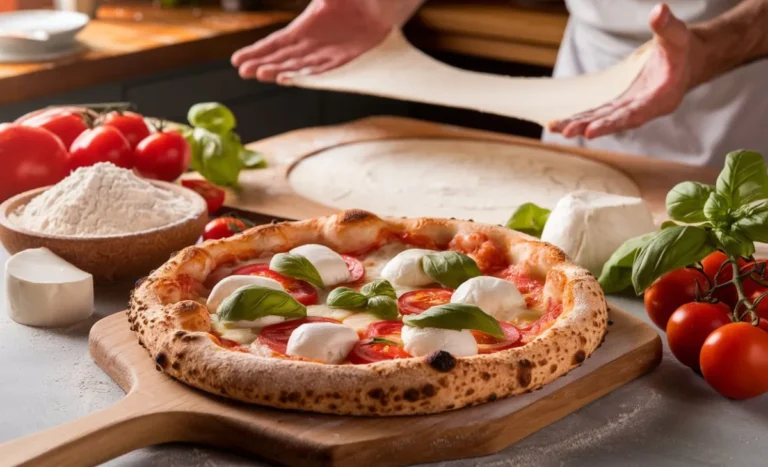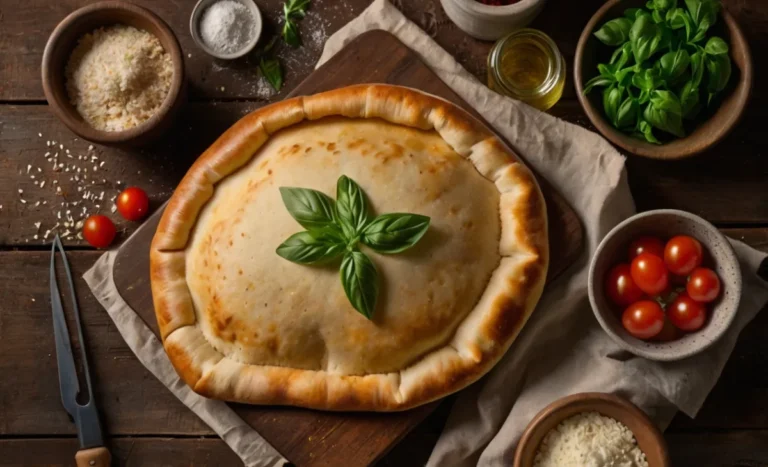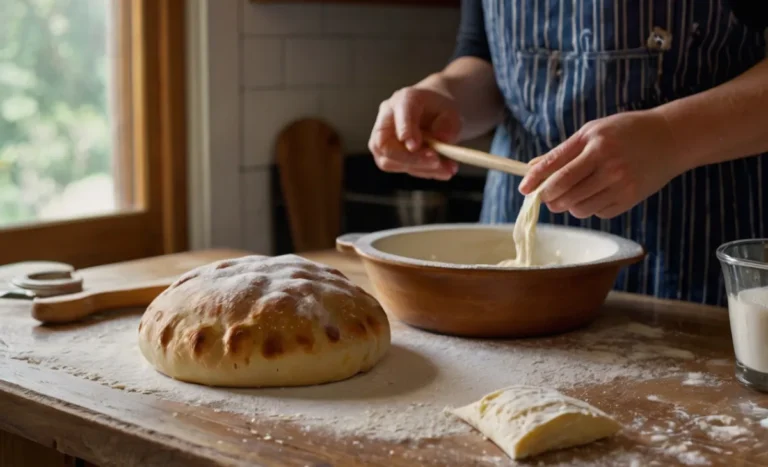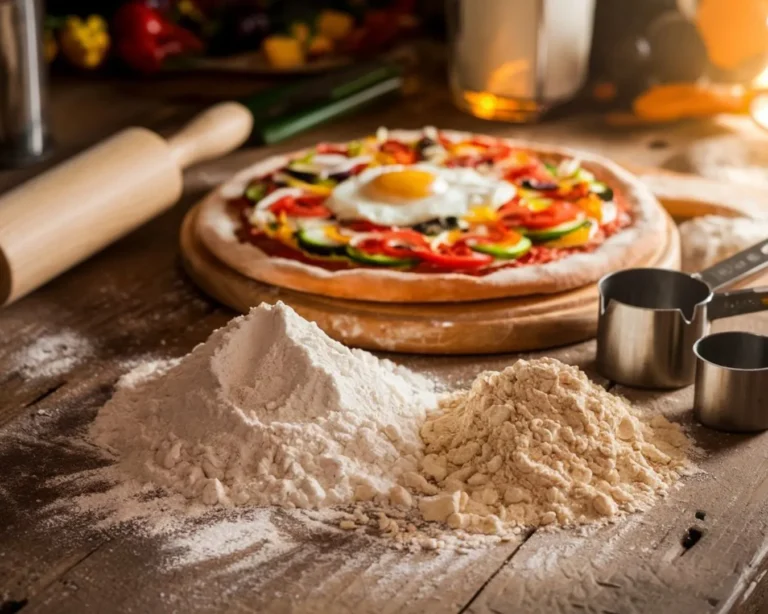Homemade pizza dough recipe – Jamie Oliver
The Ultimate Guide to Making Homemade Pizza Dough with Pizza Flour: Jamie Oliver’s Recipe for Perfect Pizza
Introduction: Why Homemade Pizza Dough is a Game-Changer
There’s something special about making pizza at home, isn’t there? With every roll, stretch, and sprinkle of flour, you’re not just preparing dinner—you’re crafting an experience, a meal to savor. If you’ve ever wanted to make pizza that’s as delicious as it is memorable, then Jamie Oliver’s renowned pizza dough recipe is a fantastic place to start. This guide covers everything you need to know to make this recipe at home, focusing on using pizza flour to achieve that perfect crust texture that melts in your mouth. By following these steps, you’ll be ready to enjoy the crispy, chewy crusts that make homemade pizza unforgettable.
Ingredients for Jamie Oliver’s Homemade Pizza Dough Recipe
Essential Ingredients for Perfect Pizza Dough
Starting with the right ingredients is crucial to creating pizza dough that has just the right flavor, texture, and stretch. Let’s take a look at what you’ll need:
| Ingredient | Measurement |
|---|---|
| Pizza Flour | 500g |
| Water | 325ml |
| Sea Salt | 1 tbsp |
| Olive Oil | 2 tbsp |
| Fresh Yeast | 7g |
| Sugar | 1/2 tsp |
Each ingredient plays a key role. Pizza flour, often labeled as “00 flour,” is finely ground with a high protein content that creates a chewy, elastic dough ideal for pizza. Using high-quality olive oil and sea salt adds richness, while fresh yeast helps the dough rise beautifully, giving it that airy, bubbly structure.
Why Pizza Flour Matters in Dough Recipes
While you can technically use all-purpose flour, true pizza aficionados swear by using pizza flour. This flour has a high gluten content, which gives the dough its stretchy texture. Gluten forms the dough’s framework, allowing it to rise and hold bubbles that create airy pockets in the crust. Jamie Oliver’s recipe takes advantage of these qualities, and by following this guide, you’ll understand why pizza flour is the secret to the perfect crust.
Step-by-Step Guide to Preparing Jamie Oliver’s Pizza Dough
Step 1 – Activating the Yeast
To start, activate your yeast by dissolving it in warm water with a pinch of sugar. The water should be around 100°F (37°C)—warm enough to wake the yeast but not so hot that it kills it. Give it about five to ten minutes until the mixture starts foaming on top. This step is essential because it gives your dough the lift and flavor you’re after.
Step 2 – Mixing Ingredients for Ideal Consistency
Next, in a large bowl, combine the pizza flour, salt, and activated yeast mixture. Mix everything together until it forms a slightly sticky dough. Add the olive oil and mix again until it’s fully incorporated. The oil not only adds flavor but also makes the dough easier to work with, so you can stretch and roll it to perfection.
Step 3 – Kneading for the Perfect Dough Texture
Place the dough onto a floured surface and knead for about 10 minutes. This process activates the gluten in the pizza flour, making the dough smooth and elastic. You’ll know it’s ready when it’s soft and no longer sticks to your hands or the work surface. If you’re new to kneading, think of it as pushing and folding the dough in a rhythm, which is surprisingly relaxing.
Step 4 – Allowing the Dough to Rise
Transfer the dough into an oiled bowl and cover it with a damp cloth. Place it in a warm, draft-free area for about 1-2 hours. During this time, the dough should double in size. This step is crucial because it develops flavor and creates air pockets that will give your pizza a light, chewy texture. If the dough doesn’t rise as expected, it might mean that the room is too cold, so try moving it to a warmer spot.
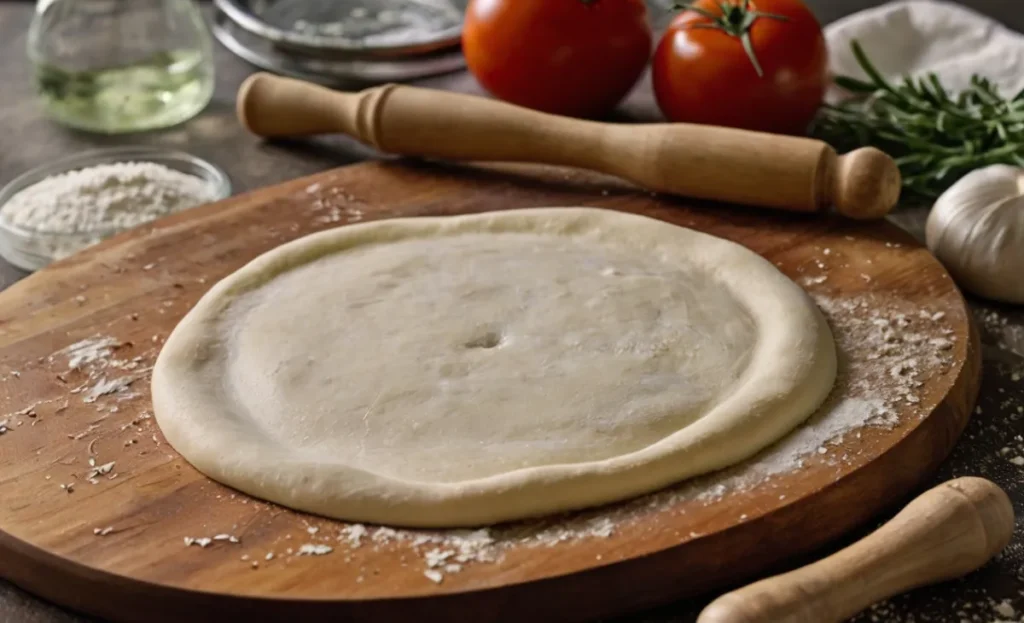
Tips for Shaping and Rolling Pizza Dough Like a Pro
Achieving the Right Thickness
Once your dough has risen, it’s time to shape it. Transfer it to a floured surface and press it down gently to release any large air bubbles. Then, using a rolling pin or your hands, shape it into a round pizza base. For a crispier crust, roll the dough thinner; for a chewier crust, keep it thicker. If you’re aiming for restaurant-quality results, the ideal thickness is around 1/4 inch.
Creating Airy Crust Edges with Pizza Flour
Dust the edges with a small amount of pizza flour to help it crisp up during baking. To get those beautiful, airy edges (also known as the “cornicione”), lightly stretch the edges without flattening them. This will keep air pockets intact, which is what creates those delightful puffy, bubbly sections in the crust.
Baking Jamie Oliver’s Pizza Dough to Perfection
Choosing the Best Baking Surface for Your Dough
For best results, bake your pizza on a preheated pizza stone or steel. These surfaces retain heat well, cooking the dough quickly and giving it a crisp, golden bottom. If you don’t have either, an upside-down baking sheet will work as an alternative—just make sure to preheat it for at least 15 minutes in a very hot oven.
Optimal Baking Temperature and Time
Jamie Oliver’s recipe suggests a baking temperature of around 475°F (245°C) for about 10-15 minutes. At this temperature, the dough will cook evenly while the edges brown beautifully. Keep an eye on the pizza in the final minutes to ensure it doesn’t overcook. The result? A crust that’s crisp on the outside yet soft and chewy inside.
Common Mistakes to Avoid When Making Pizza Dough
Making pizza dough is simple but has its nuances. Here’s how to avoid common pitfalls:
- Over-Kneading: Kneading too much can make the dough tough. Aim for a smooth, elastic texture after about 10 minutes.
- Under-Proofing: If you don’t let the dough rise long enough, it won’t develop enough flavor or texture.
- Using the Wrong Flour: All-purpose flour lacks the high gluten content of pizza flour, which means your dough won’t have that same chewy texture.
- Too Much Flour During Shaping: Using excessive flour can make the dough dry. Use just enough to prevent sticking.
Frequently Asked Questions (FAQ) on Pizza Flour and Jamie Oliver’s Recipe
- What is the best pizza flour to use for homemade pizza?
- The best flour is “00” pizza flour, which has a high protein content that gives pizza dough its characteristic chewiness.
- Can I use all-purpose flour instead of pizza flour?
- Yes, but the texture won’t be as authentic. Pizza flour provides more elasticity and airiness in the crust.
- What makes Jamie Oliver’s pizza dough unique?
- Jamie Oliver’s recipe focuses on simplicity and quality ingredients, particularly pizza flour, which elevates the crust to a pizzeria-quality texture.
- How do I store leftover pizza dough?
- You can store it in an airtight container in the refrigerator for up to three days. Let it come to room temperature before using.
- Can I freeze Jamie Oliver’s pizza dough?
- Absolutely! Divide it into portions, wrap it tightly in plastic, and freeze. Thaw it in the fridge overnight before use.
Conclusion: Elevate Your Pizza Game with Jamie Oliver’s Dough Recipe
There’s nothing quite like the satisfaction of making homemade pizza dough, especially when following a recipe that’s as tried-and-true as Jamie Oliver’s. By using pizza flour and following these steps, you’ll create a pizza crust that’s crispy on the outside, airy on the inside, and bursting with flavor. Now that you’ve got the steps down, why not grab those ingredients and start crafting your pizza masterpiece? Whether you’re baking for family, friends, or just yourself, this dough recipe will make each slice feel like a celebration.
Call to Action
Ready to take your pizza skills to the next level? Try out this recipe today and share your results! If you loved this guide, consider exploring other recipes to expand your homemade pizza repertoire.


